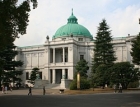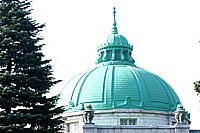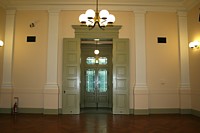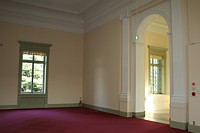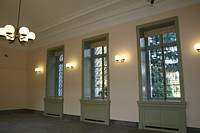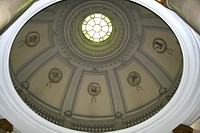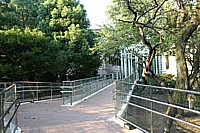Hyokeikan
October 24, 2006 (Tue) - January 28, 2007 (Sun)
The Hyokeikan, or the "Building to express joy", was planned in 1900 to celebrate the marriage of Emperor Taisho (crown prince at the time). It was designed by Katayama Tokuma, an engineer in the Imperial Household Ministry. The building was presented to the Imperial Household after it was completed in 1908, and the Tokyo National Museum (Tokyo Imperial Household Museum at the time) was appointed for its care and maintenance.
As a typical example of late Meiji period Western style architecture, the building was designated an Important Cultural Property in 1978.
The Hyokeikan has deteriorated over the years, nearly a century since its completion. It was closed since last year to repair the leaking roof and other areas that needed treatment. Now that the repair work has been completed, we are pleased to open it again to the public for viewing its renovated interiors.
An overview of the repair work will be displayed on computer screens. The original plans and drawings of the Hyokeikan and its history will also be introduced. We hope that visitors will appreciate the architectural techniques and beauty of this Western style building from the Meiji period.

